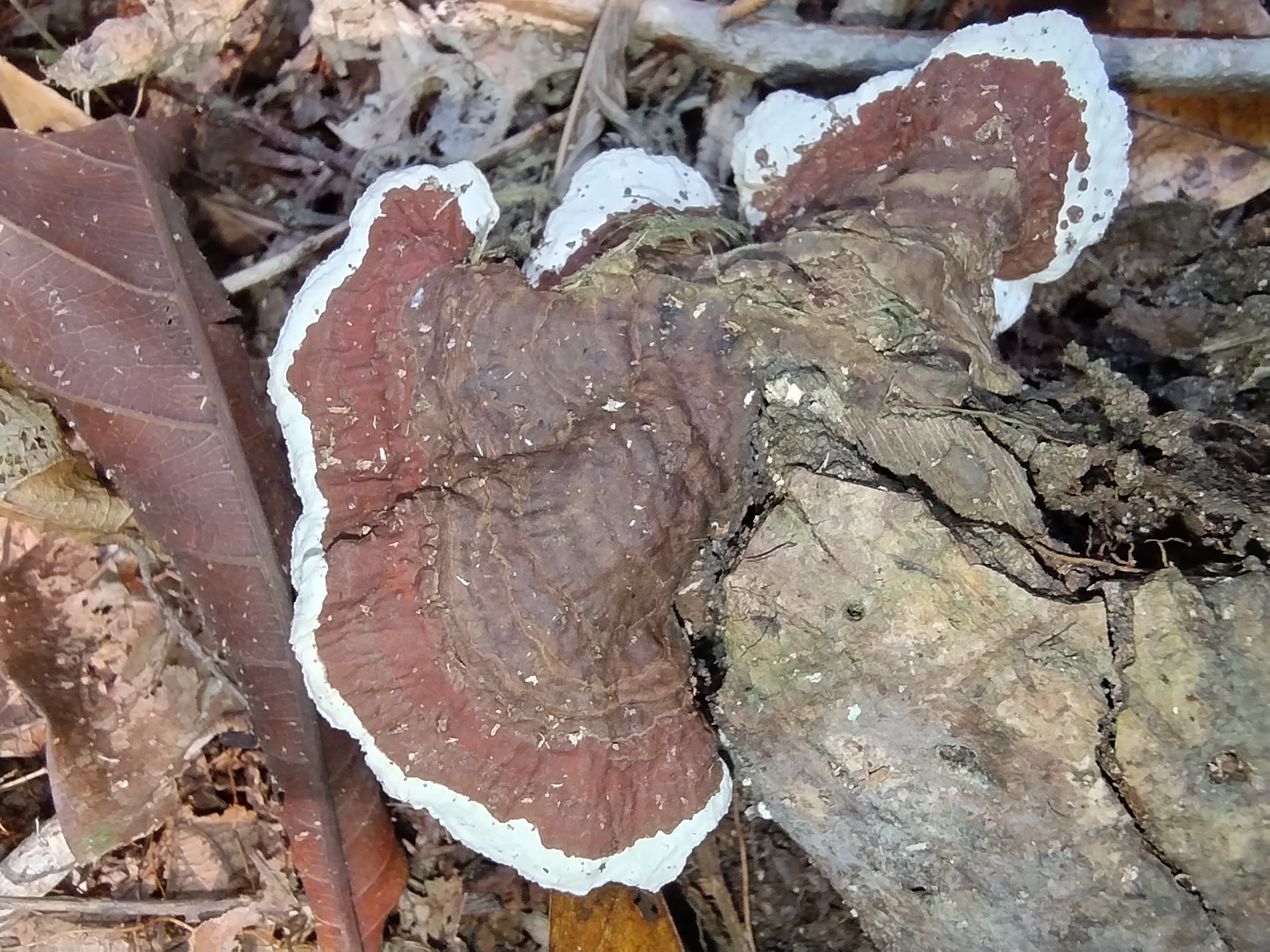Languages
Earliella scabrosa

Earliella scabrosa (Pers.) Gilb. & Ryvarden
Phylum: Basidiomycota
Class: Agaricomycetes
Order: Polyporales
Family: Polyporaceae
Distribution
Pantropical species widely distributed in tropical regions of Asia, Africa, and America, including the Brazilian Amazon. Common in humid forest areas, growing on dead wood.
Taxonomic History
Originally described as Polyporus scabrosus by Persoon, it was later attributed to the genus Earliella by Gilbertson and Ryvarden. The genus is monotypic, meaning it includes only this species.
Etymology
The name Earliella honors the North American mycologist Franklin Sumner Earle. The epithet scabrosa refers to the rough and scaly surface of the basidiocarp's pileus.
Identification
Basidiocarp resupinate to semicircular, with rough upper surface, scaly or felted, light-colored (white to beige). Small, regular pores with thin margins. Species easily confused with other light-colored polypores, but distinguishable by microscopic characteristics.
Flesh and Pores
Context white to cream, thin. Hymenium with short tubes and minute pores, typically 5–7 pores per mm. Pores are similar in color to the pileus, darkening with age.
Spores
Spores hyaline, smooth, ellipsoidal to cylindrical, measuring 6–9 × 2–3 µm. Non-amyloid, thin-walled, easily observable in aqueous mounts.
Odor and Taste
No characteristic odor or taste. Inedible due to leathery texture and lack of culinary interest.
Habitat and Ecological Role
Saprobiotic fungus that decomposes dead wood in tropical forests. Plays an important role in nutrient cycling by degrading cellulose and lignin.
Similar Species
Similar to species such as Trametes elegans and Trametes versicolor, but distinguished by its scaly texture and smaller spores. Microscopic observations are essential for precise identification.
Curiosities and Uses
Recently, Earliella scabrosa has attracted attention due to a rare case of human infection documented in a hospital environment. Apart from this, its importance is mainly ecological as a forest decomposer.

